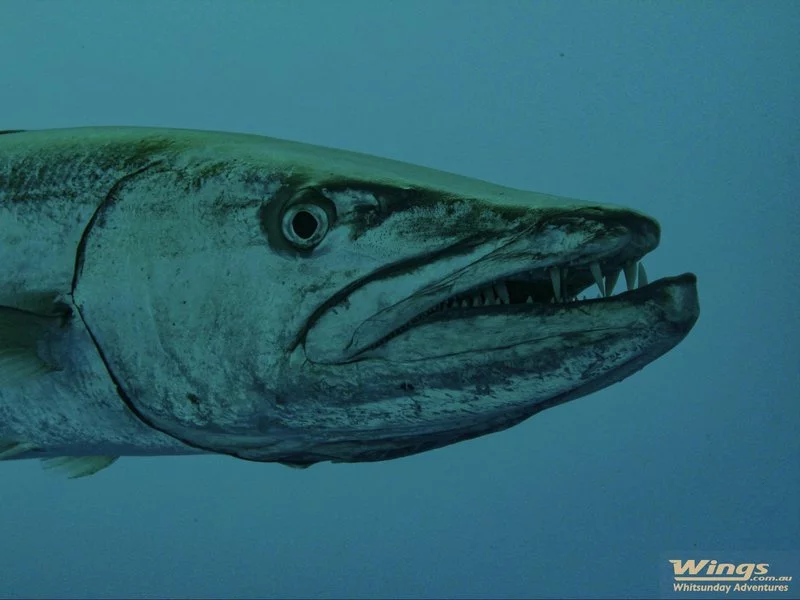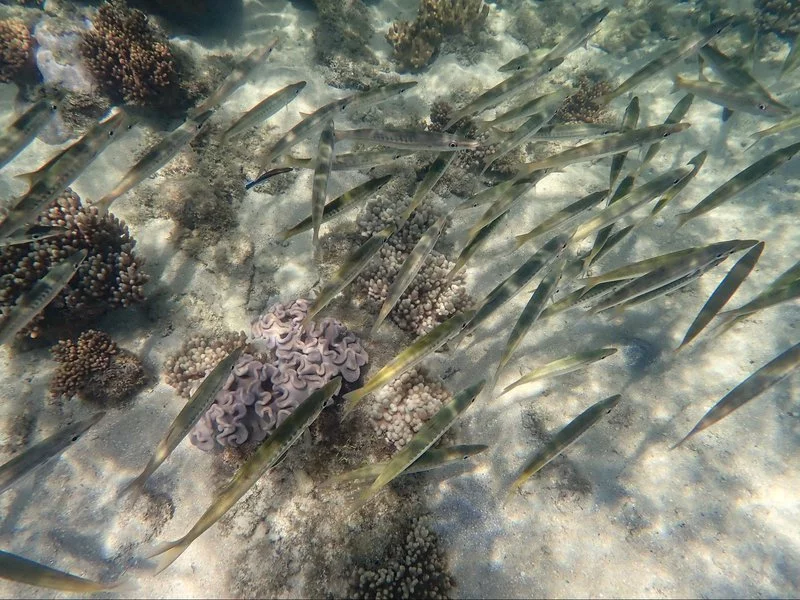
All tropical and even some temperate waters across the world are inhabited by barracudas, some species like the aforementioned great barracuda can be found in multiple regions while others such as the Mediterranean barracuda and the Mexican barracuda are only found in one region. Most barracuda species inhabit the shallow waters of inshore coral reefs, seagrass meadows and mangroves. Some of the larger species will also inhabit deeper outer reefs and the open ocean.
Barracudas are long torpedo shaped fish with muscular bodies, and while some species such as the great barracuda grow quite large at up to 3 meters long and weighing over 24 kilograms in some cases, most are small and no threat to humans. One of these smaller species is the yellowtail barracuda, which is common in the Whitsundays and throughout the Great Barrier Reef, it reaches about 35-40 centimetres in length when fully grown. One thing all barracuda species have in common is their mouth and teeth. They have large, long jaws with a characteristic underbite (upper jaw is shorter than lower jaw). These jaws have two rows of teeth. The outer row is full of small sharp teeth which they use for ripping and tearing at prey and an inner row of large fang like teeth, some of which are pointed backwards, which are used to firmly hold the prey.

These fishes are apex predators with quite a diverse diet consisting of different species of fish. Depending on the size and type of barracuda they will eat mullet, groupers, snappers, small tuna, herring and anchovies among others. These predators hunt mainly by sight relying on the movement of smaller fish causing light to be reflected off their scales and therefore making them more visible to the barracuda. This attraction to shiny things is part of the reason for the uncomfortable and often frightening encounters humans have with barracudas. Divers with shiny metal objects on their gear can attract the attention of nearby barracudas as the reflective metal can look like little fish. This can cause the barracuda to “charge†at divers and even bump them out of curiosity. Which can understandably be quite unsettling when you see their mouth full of teeth.
Here in the Whitsundays two of the most common species of barracuda that can be encountered are the great barracuda and the yellowtail barracuda. While on relaxing snorkels you can spot schools of yellowtail barracuda swimming over the shallow fringing coral reefs, easy to spot with their slender shape and bright yellow features. On the other hand if sport fishing is your thing you can try your luck with your shiniest lure and see if you can catch one of the lightning fast great barracuda that call waters around the islands home.


